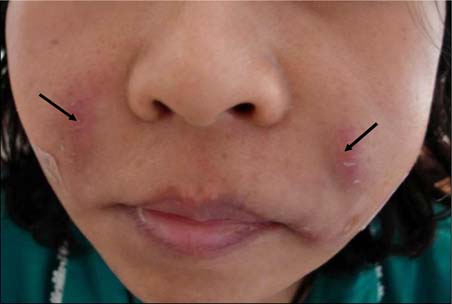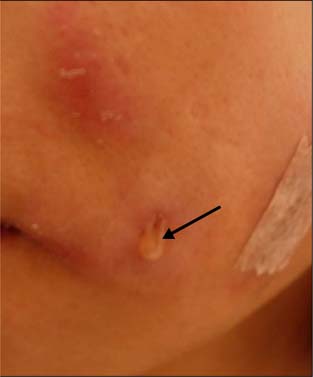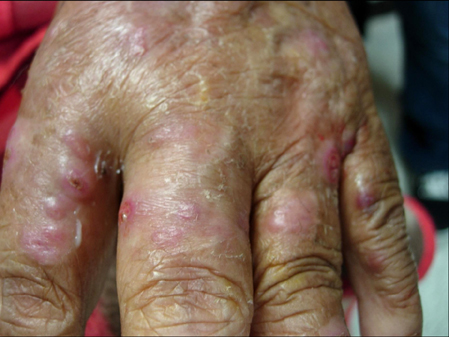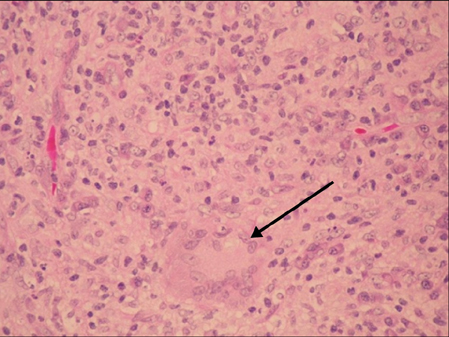Ann Dermatol.
2014 Apr;26(2):236-240. 10.5021/ad.2014.26.2.236.
Soft Tissue Infection Caused by Rapid Growing Mycobacterium following Medical Procedures: Two Case Reports and Literature Review
- Affiliations
-
- 1Department of Internal Medicine, Shin Kong Wu Ho-Su Memorial Hospital, Taipei City, Taiwan.
- 2Department of Pathology and Laboratory Medicine, Shin Kong Wu Ho-Su Memorial Hospital, Taipei City, Taiwan.
- 3Division of Infectious Diseases, Department of Internal Medicine, Shin Kong Wu Ho-Su Memorial Hospital, Taipei City, Taiwan. M002137@ms.skh.org.tw
- 4School of Medicine, Catholic Fu-Jen University, New Taipei City, Taiwan.
- KMID: 2171661
- DOI: http://doi.org/10.5021/ad.2014.26.2.236
Abstract
- Non-tubecrulosis mycobacterium infections were increasingly reported either pulmonary or extrapulmonary in the past decades. In Taiwan, we noticed several reports about the soft tissue infections caused by rapid growing mycobacterium such as Mycobacterium abscessus, Mycobacterium chelonae, on newspaper, magazines, or the multimedia. Most of them occurred after a plastic surgery, and medical or non-medical procedures. Here, we reported two cases of these infections following medical procedures. We also discussed common features and the clinical course of the disease, the characteristics of the infected site, and the treatment strategy. The literatures were also reviewed, and the necessity of the treatment guidelines was discussed.
Keyword
MeSH Terms
Figure
Cited by 1 articles
-
A Case of Cutaneous Non-Mycobacterium Infection after Illegal Botulinum Toxin Injection Diagnosed by Polymerase Chain Reaction
Min Je Jung, Bo Young Chung, Yong Won Choi, Jee Hee Son, Hye One Kim, Chun Wook Park
Ann Dermatol. 2019;31(2):242-244. doi: 10.5021/ad.2019.31.2.242.
Reference
-
1. Wongkitisophon P, Rattanakaemakorn P, Tanrattanakorn S, Vachiramon V. Cutaneous mycobacterium abscessus infection associated with mesotherapy injection. Case Rep Dermatol. 2011; 3:37–41.
Article2. Uslan DZ, Kowalski TJ, Wengenack NL, Virk A, Wilson JW. Skin and soft tissue infections due to rapidly growing mycobacteria: comparison of clinical features, treatment, and susceptibility. Arch Dermatol. 2006; 142:1287–1292.3. Toy BR, Frank PJ. Outbreak of Mycobacterium abscessus infection after soft tissue augmentation. Dermatol Surg. 2003; 29:971–973.
Article4. Sañudo A, Vallejo F, Sierra M, Hoyos JG, Yepes S, Wolff JC, et al. Nontuberculous mycobacteria infection after mesotherapy: preliminary report of 15 cases. Int J Dermatol. 2007; 46:649–653.
Article5. Garcia-Navarro X, Barnadas MA, Dalmau J, Coll P, Gurguí M, Alomar A. Mycobacterium abscessus infection secondary to mesotherapy. Clin Exp Dermatol. 2008; 33:658–659.6. Guevara-Patiño A, Sandoval de Mora M, Farreras A, Rivera-Olivero I, Fermin D, de Waard JH. Soft tissue infection due to Mycobacterium fortuitum following acupuncture: a case report and review of the literature. J Infect Dev Ctries. 2010; 4:521–525.
Article7. Bechara C, Macheras E, Heym B, Pages A, Auffret N. Mycobacterium abscessus skin infection after tattooing: first case report and review of the literature. Dermatology. 2010; 221:1–4.
Article8. Bodle EE, Cunningham JA, Della-Latta P, Schluger NW, Saiman L. Epidemiology of nontuberculous mycobacteria in patients without HIV infection, New York City. Emerg Infect Dis. 2008; 14:390–396.
Article9. Henry MT, Inamdar L, O'Riordain D, Schweiger M, Watson JP. Nontuberculous mycobacteria in non-HIV patients: epidemiology, treatment and response. Eur Respir J. 2004; 23:741–746.
Article10. Wilson RW, Steingrube VA, Böttger EC, Springer B, Brown-Elliott BA, Vincent V, et al. Mycobacterium immunogenum sp. nov., a novel species related to Mycobacterium abscessus and associated with clinical disease, pseudo-outbreaks and contaminated metalworking fluids: an international cooperative study on mycobacterial taxonomy. Int J Syst Evol Microbiol. 2001; 51:1751–1764.
Article11. Zelazny AM, Root JM, Shea YR, Colombo RE, Shamputa IC, Stock F, et al. Cohort study of molecular identification and typing of Mycobacterium abscessus, Mycobacterium massiliense, and Mycobacterium bolletii. J Clin Microbiol. 2009; 47:1985–1995.
Article12. Chen HY, Chen CY, Huang CT, Ruan SY, Chou CH, Lai CC, et al. Skin and soft-tissue infection caused by non-tuberculous mycobacteria in Taiwan, 1997-2008. Epidemiol Infect. 2011; 139:121–129.
Article
- Full Text Links
- Actions
-
Cited
- CITED
-
- Close
- Share
- Similar articles
-
- A Case of Skin and Soft Tissue Infection Caused by Mycobacterium abscessus
- Skin and Soft Tissue Infection Caused by Mycobacterium abscessus Developed after Intramuscular Injection: A Case Report
- A Mycobacterium Chelonae Subsp. abscessus Wound Infection After Percutaneous Endoscopic Gastrostomy
- Delayed Nontuberculous Mycobacterium Manifestation 1 Year after a Dog Bite on the Hand
- Atypical Mycobacterial Soft Tissue Infection after Autologous Fat Transplantation at Liposuction Site







